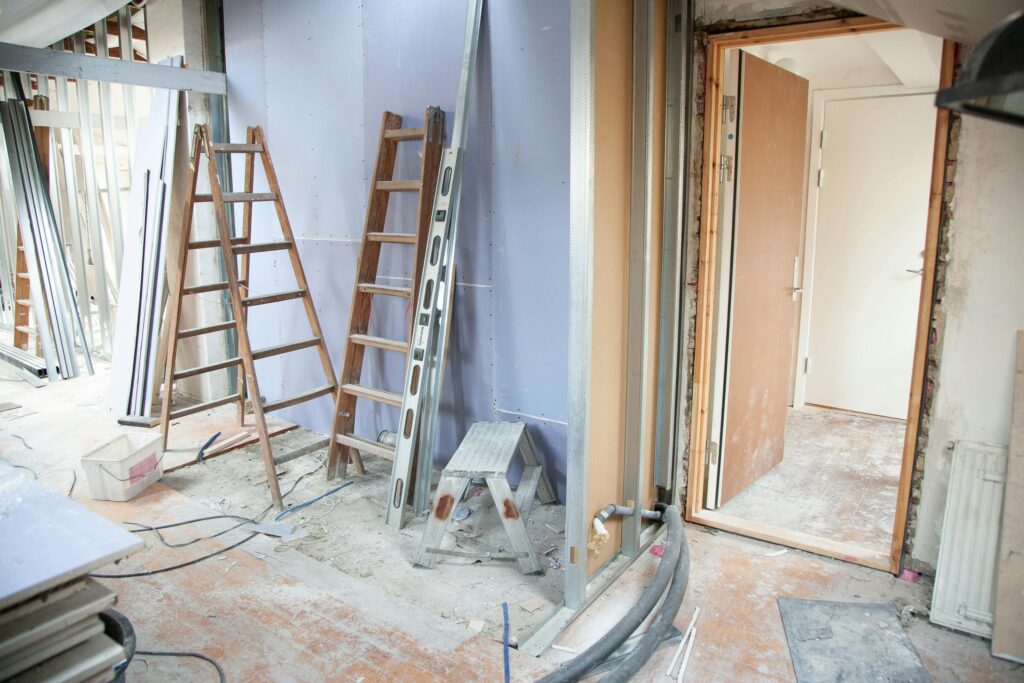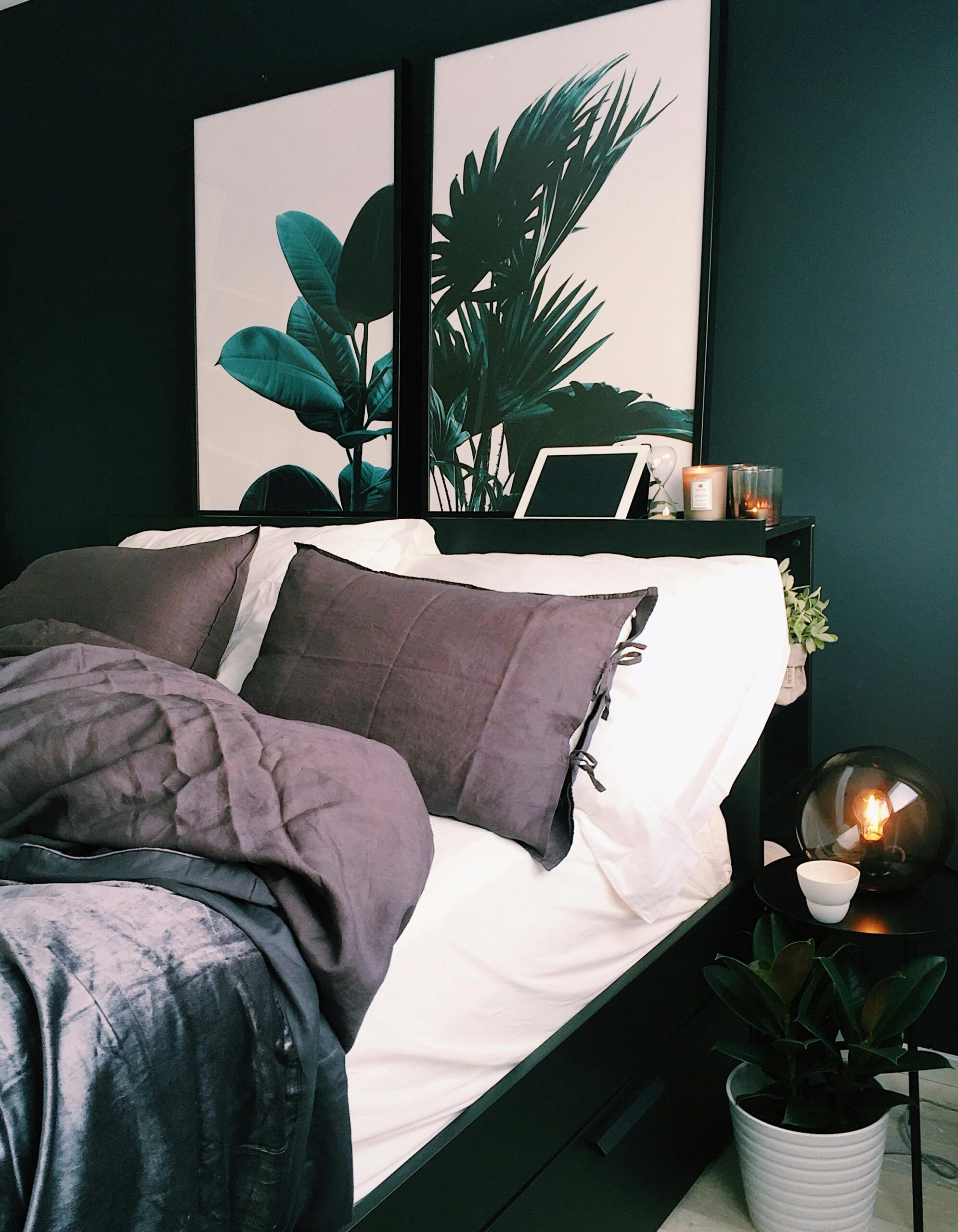
When you think about transforming your walls, innovative painting techniques can be your best tools. Techniques like sponging and rag rolling can create depth and interest, while ombre gradients offer a smooth, visually stunning transition between colors. If you’re looking to add a touch of elegance, metallic finishes could be the key. Each method serves not just an aesthetic purpose but can also conceal imperfections in your space. The real question is, which technique will elevate your environment the most, and what steps do you need to take to achieve that?
Key Takeaways
- Explore sponging techniques to add depth by dabbing two complementary colors on the wall for a textured effect.
- Utilize rag rolling to create soft, mottled finishes by manipulating a rag over wet paint in small sections.
- Experiment with stenciling patterns to personalize your space with various designs and layering techniques for added depth.
- Consider ombre gradients for seamless color transitions, applying lighter colors at the top and darker ones at the bottom for visual impact.
- Implement metallic finishes to enhance walls with dynamic light reflections, offering a sophisticated touch to your interior design.
Sponging Techniques
Using a damp sponge, you can create stunning textures on your walls with sponging techniques. This method allows you to add depth and interest to any room, transforming flat paint into a visually appealing surface.
Start by selecting two complementary paint colors. The base coat should be a solid color that contrasts with the sponge color you’ll apply later. Once the base coat dries, dip your sponge into the second color, removing excess paint to avoid drips.
To begin sponging, gently dab the sponge onto the wall in random patterns. You’ll want to apply even pressure to ensure consistent texture. Move the sponge in various directions to create a more dynamic look.
For a softer effect, you can use a dry sponge to blend the colors after applying the second coat.
Keep in mind that practice makes perfect. It’s a good idea to test your technique on a small, inconspicuous area before committing to a larger space.
With some patience and creativity, you’ll master sponging techniques, giving your walls a unique, textured finish that enhances your home’s aesthetic. Enjoy your painting journey!
Rag Rolling Effects
Rag rolling effects offer another captivating way to add texture and character to your walls, complementing the sponging techniques you’ve just explored. This technique involves using a rag to manipulate wet paint, creating a soft, textured look. It’s versatile and can range from subtle to dramatic, depending on your color choices and application style.
To achieve the best results, you’ll want to gather a few materials. Here’s a quick overview:
| Material | Purpose |
|---|---|
| Rag | To roll and blend the paint |
| Base coat paint | The first layer on your wall |
| Glaze or top coat | Adds depth and texture |
Start by applying a base coat and allowing it to dry. Then, mix your glaze with a bit of paint. Dip your rag into the mixture, wring it out, and begin rolling it onto the wall. You can layer different colors for a more dynamic effect. Remember to work in small sections, so the glaze doesn’t dry before you have a chance to manipulate it. With practice, rag rolling can transform your space into a textured masterpiece!
Ombre Gradients
When you’re looking to create a stunning visual impact on your walls, ombre gradients can add a seamless blend of colors that captivates the eye. This technique involves gradually transitioning from one color to another, creating a soft and inviting atmosphere. To achieve this effect, you’ll want to select two or more colors that complement each other.
Start by prepping your wall and gathering your supplies, including paint, brushes, and a blending tool like a sponge or roller.
Begin with the lighter color at the top, applying it evenly across the desired area. Next, introduce your second color at the bottom. For the best results, overlap the colors slightly in the middle to create a smooth transition.
As you work, use a damp sponge to blend the colors, ensuring there are no harsh lines. This technique allows you to customize the gradient’s intensity and depth, depending on your desired effect.
Once you’re satisfied with the blend, step back and assess your work. Ombre gradients can dramatically transform any space, making it feel modern and sophisticated while showcasing your personal style.

Metallic Finishes
When you want to add a touch of glam to your walls, metallic finishes are the way to go.
You’ll find various types of metallic paints that can transform your space, and knowing the right application techniques is key to achieving that stunning look.
Let’s explore how you can bring a shimmering effect to your home.
Types of Metallic Paints
Metallic paints can add a stunning touch to any wall, transforming a simple surface into a work of art. When exploring the types of metallic paints, you’ll find a range of options that cater to different aesthetics and purposes.
First, there’s water-based metallic paint, which is easy to apply and clean up. It’s perfect for indoor use, offering a variety of sheens and colors.
Then, you have oil-based metallic paints, known for their durability and rich finish. These are excellent choices for high-traffic areas or surfaces that require extra wear resistance.
You can also choose between different metallic effects, like high-gloss, satin, or matte finishes. High-gloss metallic paints create a reflective surface that catches light beautifully, while satin offers a softer sheen.
For a more textured effect, consider metallic glazes or powders mixed with a clear medium.
Lastly, there are specialty metallic paints like aged or patina finishes, which evoke a vintage look. By selecting the right type of metallic paint, you can elevate your space and make a bold statement that reflects your personal style.
Application Techniques Overview
To achieve stunning metallic finishes on your walls, mastering application techniques is essential.
Start by preparing your surface—clean, sand, and prime as needed to ensure a smooth base. Use a high-quality metallic paint that suits your desired look.
Next, choose your application tool. A brush can create fine details, while a roller is perfect for larger areas. If you’re after a more textured appearance, consider using a sponge or a rag for a unique effect.
Always test your technique on a small area to see how the paint interacts with the surface.
When applying the paint, work in sections and maintain a wet edge to avoid visible lines.
For a more layered look, you can apply multiple coats, allowing each layer to dry completely before adding the next.
Stenciling Patterns
Creativity flourishes with stenciling patterns, offering a versatile way to add personality and depth to your walls. You can transform a plain space into a stunning visual masterpiece, whether you’re aiming for a modern, chic look or a cozy, rustic vibe.
Stencils come in various designs and sizes, allowing you to tailor your approach to fit your unique style. To get started, gather your materials and choose a stencil that resonates with you. Consider how different patterns can evoke various feelings in your space.
Here are some inspiring ideas for stenciling:
- Intricate floral designs that breathe life into a room
- Geometric shapes that create a contemporary feel
- Vintage motifs reminiscent of classic elegance
- Whimsical animals or nature scenes for a playful touch
- Bold stripes that add a sense of movement and energy
As you apply your chosen stencil, remember to experiment with colors and layering techniques.
You’ll find that stenciling isn’t just about decoration; it’s a fun, creative process that allows you to express your personality while enhancing your home’s aesthetic appeal.
Brush Techniques
After exploring the artistry of stenciling patterns, you’ll discover that brush techniques offer another exciting way to enhance your walls. These methods can create depth and character, transforming a flat surface into a tactile experience. Whether you want a soft, blended look or a bold, textured finish, brush techniques can achieve your desired effect.
Here are some popular brush techniques you can try:
| Technique | Description |
|---|---|
| Dry Brushing | Lightly applying paint with a dry brush for a weathered look. |
| Sponging | Using a sponge to dab paint onto the surface for a soft texture. |
| Rag Rolling | Rolling a rag over wet paint to create a unique, mottled effect. |
| Stippling | Using a stippling brush to apply small dots of color for a textured finish. |
Each of these techniques allows you to play with colors and styles, adding personality to your space. Just remember to experiment on a test surface first. With practice, you’ll master these methods, making your walls a true reflection of your creative vision.
Textured Paint Options
When you’re looking to add dimension to your walls, textured paint options can be an excellent choice.
These paints not only enhance your space visually but also create a unique tactile experience. With various types available, you can easily find one that fits your style and needs.
Consider these textured paint options for your next project:
- Stucco Finish: Mimics a rustic, Mediterranean vibe with its rough surface.
- Knockdown Texture: Features a flattened, random pattern that adds depth while remaining subtle.
- Sand Texture: Infused with sand particles, this option offers a grainy feel that evokes beachy charm.
- Metallic Finish: Infuses your walls with glam, reflecting light for a dynamic effect.
- Sponging Technique: Creates a soft, layered look using a sponge to apply a secondary color, giving your walls character.
Frequently Asked Questions
What Tools Do I Need for These Wall Painting Techniques?
To explore various wall painting techniques, you’ll need brushes, rollers, sponges, and specialty tools like combs or stencils. Don’t forget painter’s tape and drop cloths to protect your surfaces while you work.
How Can I Fix Mistakes During the Painting Process?
Mistakes manifest during painting, but don’t despair! You can easily correct blunders by blending, buffing, or applying additional coats. Just keep calm, assess the area, and act swiftly to restore your masterpiece.
Can I Combine Different Techniques on One Wall?
Absolutely, you can combine different techniques on one wall! Mixing styles adds depth and interest. Just ensure you plan the layout, test your colors, and let each layer dry before applying the next for the best results.
How Do I Choose the Right Color Palette?
Choosing the right color palette can feel like painting the next Mona Lisa! Start by considering your room’s purpose, lighting, and existing decor. Use color swatches to visualize combinations and trust your instincts to create harmony.
What Are the Best Practices for Preparing Walls Before Painting?
Before painting, you should clean the walls, fill any holes, and sand rough areas. Don’t forget to apply a primer; it’ll help the paint adhere better and enhance the final color’s vibrancy.
Conclusion
Incorporating these innovative wall painting techniques can truly transform your space, turning dull walls into captivating canvases. Imagine walking into a room that feels alive with texture and personality, each technique whispering a story of creativity and style. Whether you choose sponging, metallic finishes, or the elegance of ombre gradients, the possibilities are endless. So, let your walls speak for you and create an environment that resonates with your unique vision and warmth.